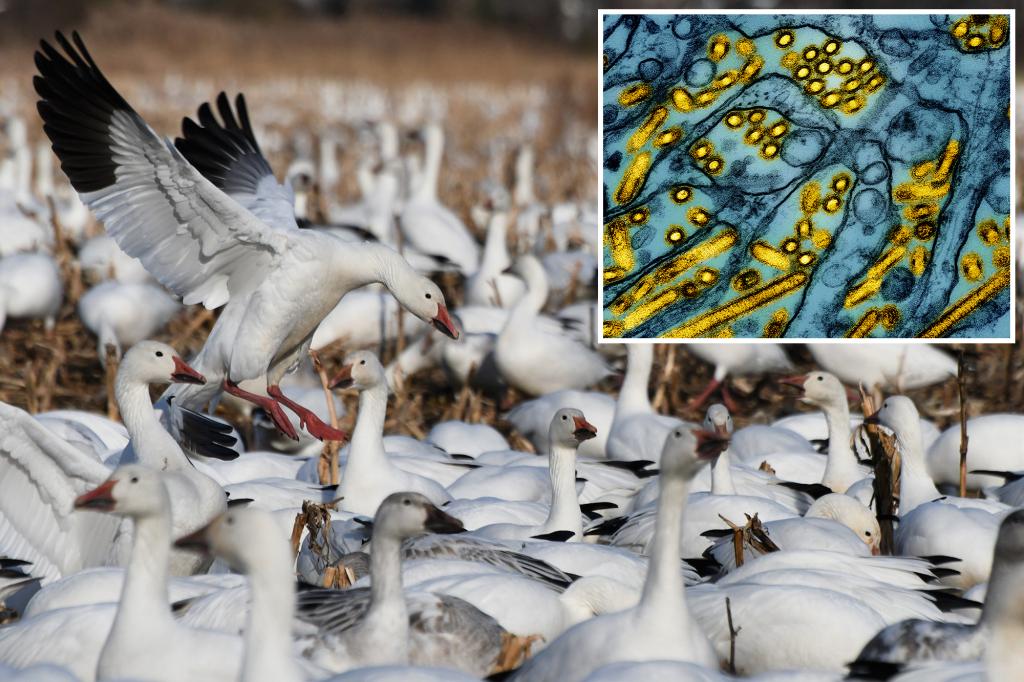The recent discovery of over 200 deceased snow geese in Pennsylvania’s Lehigh Valley has sparked concerns about a potential surge in avian influenza cases. The birds, found in Lower Nazareth Township and Upper Macungie Township, are suspected to have succumbed to the highly pathogenic H5N1 virus, commonly known as bird flu. While preliminary tests indicate the presence of the virus, official confirmation awaits ratification from the US Department of Agriculture. The presence of infected, but still living, birds at both locations amplifies anxieties about the potential spread of the disease. This incident underscores the ongoing threat posed by avian influenza and its potential to devastate bird populations. The Pennsylvania Game Commission is actively investigating the cases, recognizing the potential for a wider outbreak should these fatalities prove to be harbingers of a larger trend.
Avian influenza, or bird flu, is a highly contagious viral disease that primarily affects birds but can also infect other animals, including mammals. The H5N1 strain, currently circulating, is of particular concern due to its high pathogenicity, often leading to rapid death in infected birds. There is currently no known cure or treatment for the disease in animals, meaning infected birds often face euthanasia to prevent further spread. The speed with which the virus can kill, often within a day, highlights the severity of the disease. The concern extends beyond the immediate impact on bird populations, as the virus can spread through the food chain. Scavengers, such as eagles observed in the area, can contract the virus by feeding on infected carcasses, perpetuating the cycle of infection. This poses a significant threat to biodiversity and ecosystem health.
The recent outbreak in Pennsylvania is not an isolated incident. Bird flu cases have been on the rise across the United States, affecting various species, from wild birds and poultry to mammals like cows and even domestic cats. The virus’s ability to jump species barriers highlights the potential for wider ecological and public health implications. Furthermore, the virus has also infected humans, with 66 cases reported nationwide. California has experienced the highest number of human cases in 2024, primarily attributed to exposure to infected cattle. This emphasizes the need for vigilance and preventative measures to mitigate the spread of the virus and protect both animal and human populations. The interconnectedness of ecosystems and the potential for cross-species transmission underscores the importance of a comprehensive approach to disease surveillance and control.
The widespread nature of the avian influenza outbreak is reflected in the staggering number of infected birds and poultry across the country. Since January 2022, nearly 11,000 wild birds have tested positive for the virus, serving as a stark reminder of the virus’s pervasiveness in the environment. The impact on the poultry industry has been even more significant, with over 129 million birds infected since February 2022. This has resulted in widespread economic losses and disruptions to the food supply chain. The fact that all 50 states have reported outbreaks linked to infected poultry demonstrates the extensive reach of the virus and the challenges in containing its spread. The scale of the outbreak necessitates a coordinated national response to mitigate its impact and prevent further escalation.
The implications of the ongoing avian influenza outbreak extend beyond immediate mortality rates. The virus poses a significant threat to biodiversity, impacting various bird species and disrupting ecological balance. The potential for spillover into other animal populations, including mammals, raises concerns about broader ecosystem health. The human health implications are also significant, with a growing number of cases reported. While the majority of human infections have been linked to exposure to infected birds or poultry, the possibility of human-to-human transmission remains a concern. The economic impact on the poultry industry is substantial, with widespread culls and disruptions to production. The outbreak highlights the interconnectedness of animal health, human health, and economic stability.
Addressing the avian influenza outbreak requires a multi-faceted approach involving surveillance, prevention, and control measures. Enhanced surveillance efforts are crucial for early detection and rapid response to outbreaks. This includes monitoring wild bird populations, domestic poultry flocks, and other susceptible animal species. Biosecurity measures on poultry farms are essential to prevent the introduction and spread of the virus. Vaccination strategies, where appropriate, can play a role in protecting poultry and reducing the risk of transmission. Public education and awareness campaigns are vital to inform the public about the risks of avian influenza and promote responsible practices to minimize exposure. International collaboration is also essential to address the global nature of the outbreak and share best practices for control and prevention. A coordinated and proactive approach is crucial to mitigate the impact of avian influenza and safeguard both animal and human health.

